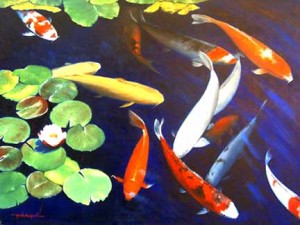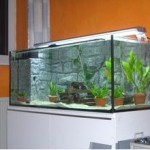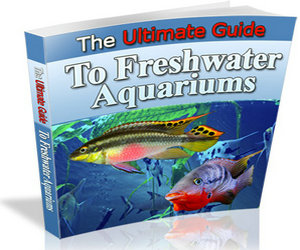
Is it any wonder that more and more people world wide are finding themselves drawn into the aquatic realm of the Koi?
Following the historical growth in popularity in the early 20th century, from its humble origins as a humble food source in China to a captivating object of beauty in Japan, the Koi has established a special place in the hearts of many due to its ever-increasing range of color, pattern and scalation.
These days, what was once a fish with limited variety, has become a prized possession, due to an explosion in the flourishing breeding and cross-breeding programs world wide. These breeding programs have produced some of the most stunning and spectacular Koi specimens ever seen.
When the magical Koi first grabs your interest, you ought to gain a basic understanding of the Japanese Koi Jargon to appreciate the 13 classes of Koi that have been established over the years. Each of these classes (and their sub-classes) use Japanese nomenclature to define the traits of Koi.
In the simplest of terms, there are three main traits, primarily color & color pattern, brilliance and scale type. The long-term appeal of koi is that each one is unique – no two are the same. There can be brightly colored koi and koi with subtle, soft tones. You’ll find koi covered from top to bottom with scales and others that are scale-less. There are koi that are metallic, or sparkling, or matte, and Koi that are mono-colored or multi-coloured.
For the amateur, the most important points to understand are:
Color and Color Pattern – in the early days there were just one or two colors available. With the passing of time and extensive breeding, there are now a myriad of colors to select from, and whilst the colors available generally include shades of red, orange, yellow, green, blue, indigo, white, cream, black and grey, there are the added choices of color patterning and combination. For instance, the solid foundation color might have one or more different colored markings. These markings may be spread over most of the body or develop on one part of the body only. On the other hand, the fish might be one solid color with no markings at all. The choices are astounding!
Brilliance
Non-Metallic Koi – are grouped based on their foundation color. These groups are then further broken down based on their accent colors and special features. Each color, marking type and feature has a Japanese name. Thus each koi variety name can be composed of multiple parts to specify each of these characteristics.
Metallic Koi – are grouped depending on the reflective nature of their scales. Metallic Koi are also identified as Hikari Koi from the Japanese word “Hikari” indicating “Shiny”. These Koi are further divided into three groups being the Hikari Muji (mono-colored and shiny), the Hikari Utsuri (tri-colored and shiny) and the Hikari Moyo (shiny with platinum and either red or yellow).
Scale Types
Doitsu refers to either the leather-skinned or scaleless Koi, or to the mirror-scaled Koi which has noticeably large scales down each side. Doitsu can appear on both Metallic and Non-Metallic Koi but are quite rare. “Doitsu” comes from the Japanese word for “German” after the German Carp.
KinGinRin refers to those koi with extremely reflective scales. These reflective scales are very popular and have been bred into many of the varieties of Koi. Position of these scales can further divide the Koi into the KinRin (Gold) where the scales are over a red base color, or the GinRin (Silver) where the scales are on top of a black or white foundation color.
Koi Classes
Within the Metallic Koi Category there are 9 main classes and within the Non-Metallic, there are only 3. However, within each class there are frequently numerous sub-classes.
Non-Metallic Koi Classes include:
Asagi – blue back with a red belly / the blue scales of the back have white edges that produce a net appearance / the cheeks and pectoral fins are red and the head is light blue to white
Bekko – opposite to the Utsuri, the Bekko has a solid foundation color of red, white or yellow with black markings (sumi). The head of a Bekko should always be clean with no sumi markings.
Kawarimono – this class consists of all the varieties that are not able to be categorised into any of the standard koi types
Kohaku – the most popular of the koi varieties, is a two color, non-metallic koi with a white base color topped by red (hi) markings spaced uniformly over the body but not beyond the lateral line and not on the fin or tail
Koromo – literally means “robed” or “clothed”. The Koromo is a cross-bred koi from Asagi and the Kohaku. It has a pure white foundation with the scale reticulation of the Asagi only noticeable in the red patterned areas
Sanke – a white base skin color with red (hi) and black (sumi) patterns scattered evenly over the body.
Showa – black base skin color with red and white markings. The earliest Showa had more black and red than white, however, more recently, the amounts of white have increased, making them more tricky to differentiate from Sanke’s. Unlike the Sanke, the Showa must always have a black pattern on its head.
Tancho – named after the Tancho crane bearing a single red spot atop its head, the Tancho class of koi is made up of the Kohaku, Sanke and Showa varieties, which likewise sport a well-placed red spot (hi) on the head.
Metallic Koi Classes include:
Hikari Muji – these are Koi of one solid, metallic color. There are two sub-groups being the Matsuba, in the color of gold, silver, grey or orange and with a pine cone pattern. The other sub-group is the Ogon, yet again a solid, metallic color in either gold, silver (platinum), orange, or red and white, but without the pine cone pattern. The red and white Ogon is basically a Metallic form of the Kohaku.
Hikari Utsuri – metallic version of the Utsuri or Showa – that is, metallic red, black and white.
Hikari Moyo – multi-colored, platinum Koi with either red or yellow.

















Hi Webmaster! Check out this awesome wordpress plugin for your site! I use it for all my sites.
I could not agree more